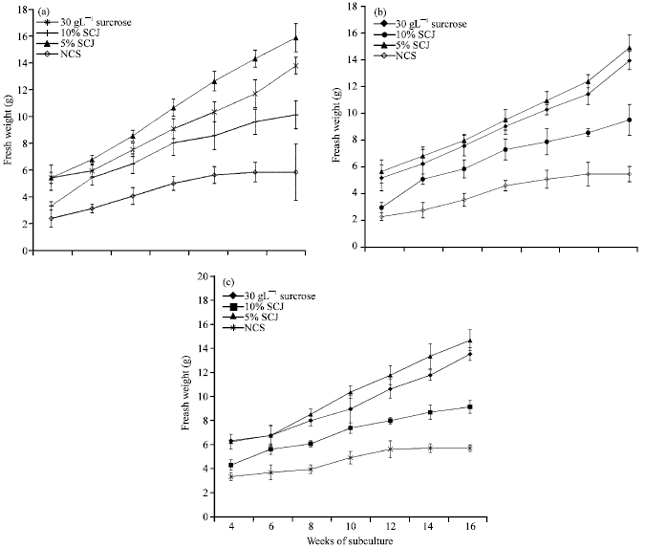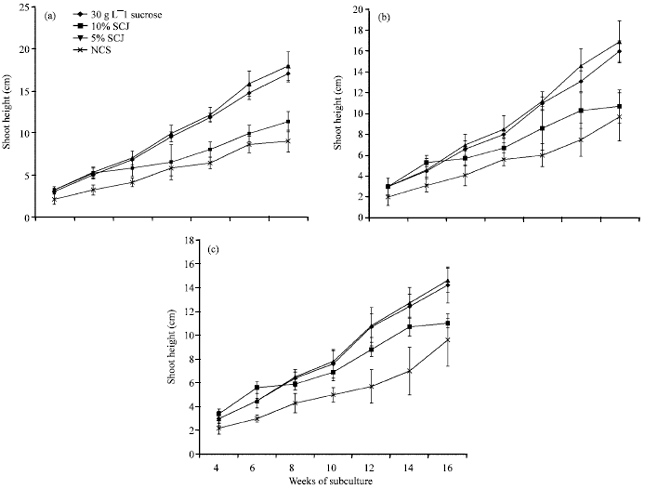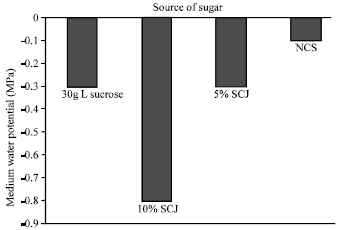Research Article
Sugarcane Juice as an Alternative Carbon Source for in vitro Culture of Plantains and Bananas
Department of Crop Science, School of Agriculture, University of Cape Coast, Ghana
J.W. Tachie-Menson
Department of Crop Science, School of Agriculture, University of Cape Coast, Ghana
G. Addae
Department of Biochemistry, School of Biological Sciences, University of Cape Coast, Ghana
P. Asare
Plant Genetic Resource and Research Institute, Ghana













